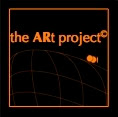Russian street artist P183 is covering Moscow with his politically charged murals – and says he's doing it for a 'strong, educated and cultured homeland'
Decorating the walls of Moscow with politically fuelled graffiti isn't met with quite the same admiration as it is in the UK, yet an artist known only as P183 has made a name for himself by capturing the zeitgeist of modern-day Russia in his work.
P183's portfolio includes a sprawling mural of a masked protester holding a flare, a CCTV camera fitted with machine guns and a cardboard cut-out of a young girl hanging baubles on a barbed-wire fence. After gaining notoriety when photographs of his art got picked up around the world, he is now preparing a new series that will be unveiled around the Moscow streets soon.
Dubbed the Russian Banksy, or "Bankski", his art resembles the world's best-known street artist, although P183 insists he has never tried to imitate the Bristolian. Speaking from Moscow over Skype, dressed in his usual black garb and balaclava, he says: "I fully understand that we both have a common cause, but I never sought to emulate him or anyone else. I use the songs of people such as Yegor Letov and Konstantin Kinchev for inspiration – not public figures."
P183 first began writing poems at the age of 11 on the Tsoi Wall in Moscow, which pays tribute to Soviet musician Viktor Tsoi. Then as he got older, he began to spray murals elsewhere in the city. Lately he has set up guerrilla installations, including a giant fork shovelling industrial piping that looks like a plate of spaghetti.
As with most street artists, P183's canvas is all too soon covered with grey paint by the authorities. "The city government is categorically against street art, so any wall drawings are painted over. Graffiti with political meaning and social subtext are painted over especially fast," he says.
At the mere mention of this week's Russian election, he scowls. "I'm not going to talk about Putin, it's too much. In our country, there is a very heavy atmosphere. People are closed-minded, and money is the most important thing. Our state does not support creativity. To me, street art is a tool to send thoughts to people."
His motivation remains "to have a strong, educated and cultured homeland". If photographers continue to get to his work before the authorities, he may help to achieve just that.
*this article is originally posted on: the guardian- SHORTCUTS BLOG; A Sideways Look at the News



